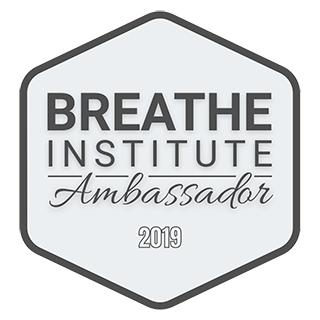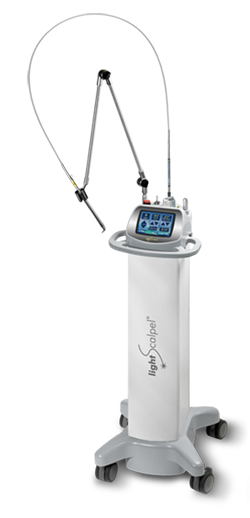Tongue-Tie and Lip-Tie Assessment:
Infants discussed in detail here
 The initial assessment of your infant requires only a few minutes. We begin by discussing your symptoms and your infant’s symptoms. Dr. Gunsaulis will examine your infant in the same position we recommend active wound management after the revision of an upper lip-tie, cheek-tie and/or tongue-tie: the person doing the examination will hold the infant’s head in his or her lap with the infant’s feet toward the examiner’s knees. In this way, the examiner is looking straight down into the infant's mouth. Knee to knee position.
The initial assessment of your infant requires only a few minutes. We begin by discussing your symptoms and your infant’s symptoms. Dr. Gunsaulis will examine your infant in the same position we recommend active wound management after the revision of an upper lip-tie, cheek-tie and/or tongue-tie: the person doing the examination will hold the infant’s head in his or her lap with the infant’s feet toward the examiner’s knees. In this way, the examiner is looking straight down into the infant's mouth. Knee to knee position.
Releasing the Tongue-Tie and Lip-Tie
If a frenum is contributing to functional deficits and scores high enough on appearance and functional examination, it is tie; and a frenectomy will be recommended to release the tie (see bottom of page, questions and answers, regarding therapy necessary prior to release). Releasing the lip, cheek and tongue does NOT require any general anesthesia and is safely, quickly and easily completed in the dental office using a CO2 laser for infants to adults.
Surgical release of an infant’s tie takes less than 30 seconds and requires NO numbing, restrictive sutures or other drugs.
Active wound management after the release of a tongue-tie, lip-tie, and/or cheek-tie is necessary to prevent reattachment of the tie and to retrain the now-free muscles to function efficiently to form the mouth correctly through growth and development. For an infant, this means achieving an efficient feed. For children or adults this may mean achieving coherent speech, or a restful nights sleep without pain/headaches the following day.
As Michelle Price Emanuel has said, “Releasing the tie is a big part of improving latch and nursing, but there is also a need to do intentional therapy and exercises to help bring on healthier oral function. Somethings will improve spontaneously, but most oral function needs intentional activities to promote optimal function.” This is also true of older children and adults.
Active Wound Management
Active wound management after the release of a tie, also known as tethered tissue, is critical to prevent reattachment when there are no sutures. Wash your hands well before and after lifts (gloves are not necessary) the person doing the examination will hold the infant’s head in his or her lap with the infant’s feet toward the examiner’s knees. In this way, the examiner is looking straight down into the infant's mouth.
Lift the tongue by pushing back and down with one or two index fingers directly above the wound to stretch the tongue back and down, toward the throat, as far back as it will go for 5 seconds so you can fully see the diamond shaped wound . Lift the lip by putting your two index fingers above the wound, pushing the lip up to fully stretch the lip over the nose holes for 5 seconds, so you can fully see the diamond shaped wound. Use one index finger in the shape of a hook to pull the cheek up as far as it will go for 5 seconds. Do not be afraid, you cannot over stretch
the lip, cheek or the tongue. The lifts are the sorest the week following the procedure.
Lift the lip, tongue and/or cheek until fully moved free from the wound for 5 seconds. Do this 4 times a day, every 6 hours, for at least 3 weeks. Trim nails as finger nails should NOT touch the wound. Use Smart Phone Alerts to make sure lifts are occurring once every 6 hours. Start 6 hours after the release for all lip and cheek ties. Wait 24 hours after the release to start the tongue lift.
If at the end of the 3 weeks you can only see a vague outline of the diamond/oval wound and the skin inside is the normal color and appearance of the surrounding skin, you no longer need to continue with active wound management. Most patients require a minimum of 3 weeks of active wound management, however there are exceptions: If at the 21st day of stretches, you see any white inside the diamond/oval shaped wound, add one more week of wound management, even if the next day no white remains. There have actually been a few patients that required 5 weeks of wound management because they had white inside the wound at the end of the 4th week. I haven't had any patients require more than 5 weeks.
A small amount of spotting or bleeding is common after the procedure, especially in the first week when doing the lifts. You may use Tylenol, Ibuprofen (if 6 months of age or older), Arnica, Rescue Remedy or other measures to help with pain control. As of October 2016, the FDA has requested that teething gels no longer be used. A suitable replacement is organic coconut oil, which can be safely used in the mouth following the exercises. Do not use coconut oil before the exercises as it may inhibit full retraction. Frozen coconut oil to wound further helps with pain control, cooling the wound.
I recommend Arnica montana 30 c pellets. (Spokane Valley Fred Meyer's on Sullivan and Roasurs grocery store on University) Place 2-3 pellets in a dropper bottle with 1 ounce of breast milk. Keep refrigerated and discard in one week. Place 1-2 drops on each wound every hour for the first few days as needed for pain.
Tongue-tie release is always located where the tongue and the floor of the mouth meet, it often requires a horizontal, superficial extension to release fascia at mid-line and on either side of the tongue, sometimes more on one side than another, in response to the tie and its effect on the growth. The lip/cheek-tie release is always located at the insertion of the frenum to the attached gingiva, gums) extending to the depth of the vestibule, where the lip and and movable inner oral mucosa, skin, meet. Release of all sites results in a diamond to oval shaped wound.
Keep in mind that laser release of ties results in less bleeding following the release than with other surgical treatments and a white to yellow colored wound will be seen and decrease in size while healing and resolve upon full healing. This is not an infection; it is normal wound healing and because it is free from sutures, heals with less restriction and pain.

Laser
Dr. Gunsaulis prefers to use a CO2 laser to release ties because it is the most state-of-the art method and because it is her preference and what she has been trained to use. However, Dr. Gunsaulis knows this procedure can be successfully done in many manners and is quick to point this out to parents and patients seeking her services.
Regardless of the surgical technique used, ensuring full release of all oral tethered tissue is critical to the patient's growth and development of optimal feeding, chewing, swallowing, breathing, speech, tooth and jaw positions and preventing oral diseases.
It Takes A Community
After a frenectomy, or tie-release, it is necessary to retrain your infant to suckle correctly. This can be done by massaging the front half of your infant's roof of mouth. Use your finger to do this, your infant should be able to suck on the area between the first and second knuckle. Do this at least 3 times a day for 3 weeks following the frenectomy.
If you don’t have a lactation consultant already we will give you the name of one of the many IBCLCs in our community that can help you achieve the best possible outcome. We also routinely refer our infant and older children post-operative frenectomy patients to other professionals experienced in treating infants, children and adults that can further evaluate and/or provide treatment to enhance growth and development, such as myofunctional therapists, midwives, lactation consultants, pediatricians, speech and feeding therapists, osteopaths, cranial sacral therapists, chiropractors, physical therapists, functional orthodontists and many more integrative providers.
We encourage parents to engage their infants in tummy time and provide gentle body massage to aid in healing, regain balance and provide comfort.
Please feel free to contact Dr. Gunsaulis with questions/photos via e-mail anytime: [email protected]
Frequently Asked Questions
- Question:
- My 2 1/2 year old was just referred for a possible tongue tie that may need to be released. I wanted to ask how you handle toddlers who need this procedure versus infants. He will definitely not sit still, and we are wondering if he will need to be put under anesthesia and if you handle these cases or if there is another doctor or dentist you might recommend.
- Answer:
-
I routinely see toddlers without anesthetic, anesthesia or conscious sedation, but I do recommend a consultation/examination so I can determine if a release is necessary and we (guardians and me) can determine what, if any, immobilization may be necessary (immobilization is a device that restrains a sedated or pre-cooperative patient so there is little to no body movement). I do use local anesthetic to numb the tie when my patient is age 3 and older and weighs enough to support its use.
A laser release is performed in seconds, only a few minutes in the dental chair. Healing is without stitches and so guardians must be prepared to do wound management for at least 3-5 weeks following the procedure. My wound management protocol is listed above.
-
Question:
-
Do I have to wake my child to do the stretches every 6 hours?
-
-
Answer:
-
Yes you do need to do the stretches every 6 hours but you may not have to wake your infant or toddler if you can achieve a Sleeping Tongue Posture Hold
- Question:
- What if any therapy is necessary prior to a release?
- Answer:
- Depending on the age/ability of the patient, therapy is recommended before and after a release on all children and adults and some infants and toddlers. The type of therapy is dependent on the complications caused by the tie(s). Myofunctional therapy is always indicated in children age 4 and above.
-
- Question:
- A highly regarded provider mentioned on social media that parents should not see a release provider that doesn't use a particular instrument, is that correct?
-
- Answer:
- Let your community guide you, if you receive multiple referrals to a particular provider, that is a sign your child/infant will be in expert hands. Do not let the type of instrument used, or not used, be a determinate; to do so allows ego to stand in the way of excellent care. Same can be said when a provider says anything negative about another provider; the naysayer is acting unprofessionally and should be avoided.